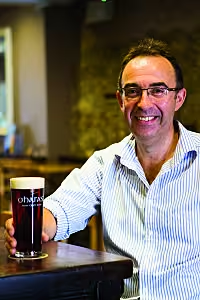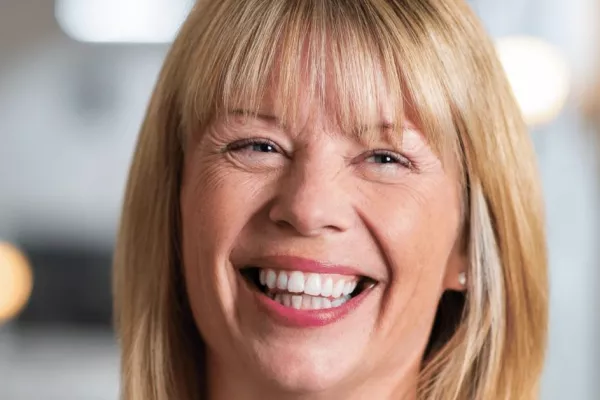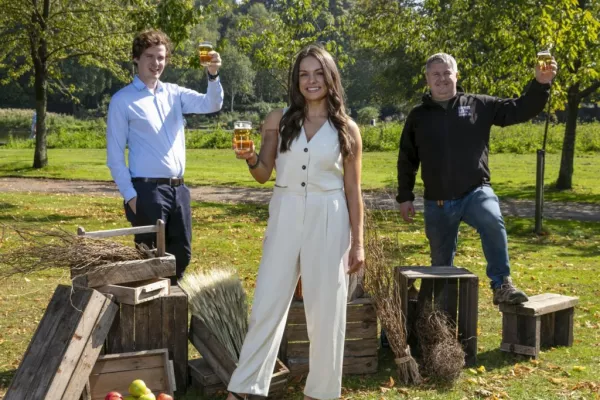The craft-beer landscape in Ireland has changed dramatically over the last few years, as sales have tripled since 2011. John Golden examines the potential for growth for Irish brewers, how craft beer is creeping onto food menus, and ways that independent breweries can make a name for themselves in a competitive sector.
With over 50 microbreweries now producing, the craft beer market in Ireland is at a stage of exponential growth and shows no sign of slowing down. Off-licences are squeezed for space with fridges full of double-IPAs, nitro-stouts and barley ales, where previously a small selection of established brands had ruled the roost. Pubs dedicated solely to craft beer are opening around the country, where Guinness, Heineken or Budweiser is nowhere to be found – something that as little as ten years ago
would have led people to believe that the publican responsible was either mad or tired of making money. The landscape is different in 2015, where the craft beer market has grown by 18 per cent, set against a 3 per cent decline in the beer market overall.
Potential
Is there a fear amongst brewers that the novelty may wear off? A cynic could be forgiven for thinking that the sheer number of options will lead to consumer fatigue and a return to the well-known brands in the long run. However, Susan Kelly, strategic director of Dublin-based advertising agency McCannBlue, says the potential for craft beer producers in Ireland is huge and still very much untapped, and that brewers in Ireland can be "trailblazers".
Last year, McCannBlue carried out research on consumer attitudes to craft beer and cider, culminating in The Discovery Beer & Cider Report. The research revealed that 60 per cent of the people surveyed couldn’t name a craft beer, while 70 per cent wanted to know more about them. The fact that craft beer only accounts for about 1.5 per cent of the total beer market in Ireland shows its true potential.
In the US, craft beer broke double digits for the first time last year, claiming 11 per cent of the market share by volume. Susan explains that independent US brewers got their timing right and established themselves before the big ‘macrobreweries’ caught on.
“I think that the Irish craft-beer movement is lagging a bit behind the US market in that they grew at a time when the macrobreweries probably weren’t taking them that seriously and never thought they’d eat into their share that much. But now they’ve realised that microbrewing is a real threat to them and is taking a shareable size of their market, so they’re being a little bit more nimble in their strategy.”
The strategy has taken the form of ‘if you can’t beat ’em, join ’em’, as almost all of the ubiquitous brands are buying up smaller breweries or, even more cunningly, producing beers that to the untrained eye appear to be independently produced craft beer, while making their own brand name secondary.
Strategy, says Susan, is what is required now from established brands in Ireland. “I think the microbreweries need to do an education job because the consumer is still in learning mode, and then, all of a sudden, they have these macrobrews that are using this craft language interchangeably so they don’t know the difference between what is true craft and local. I would love to see the craft community come together to do an education piece so consumers know the right questions to ask.
“We found that they were slightly intimidated by all the choice, that they were afraid of not asking the right questions, so they were defaulting to what they knew. In some bars, they’re great in describing beers and giving out tasters, etc., but what I’ve found in other places, there’s a little bit of snobbery, which doesn’t help consumers along in their knowledge.”
The new experiences that the increasing range of beers available gives is both an opportunity and a challenge for breweries, as people who are eager to discover these beers seem to be less brand loyal and more about trying new things.
“It’s a challenge,” says Susan. “It is more about experience-seeking, but that’s a good thing because 20-25 years ago, you could have a beer in three colours: gold, red or black. So it’s a good thing that there are now lots of opportunities to seek out new experiences. The brewers are just going to have to keep on innovating to keep on delivering new experiences to their audience. They can do this with new and seasonal products, but also with their branding, finding new ways to engage their consumers so they stay top of mind.”
Carlow Brewing
One such company that is striving to stay top of mind is the Carlow Brewing Co. Started by Seamus O’Hara in 1996, its O’Hara’s beer range is a near 20-year veteran in a sector full of start-ups. Seamus has seen the scene go through a dramatic change, as pubs, restaurants and off-licences take on the consumer demand for a broad range in a sector that was for so long dominated by a small number of big brands. Independent brewers, he says, made the big- money brands change the way they operate and has ignited the competition level. As for O’Hara’s, its increased popularity has made Seamus’s life easier with regards to selling.
“It’s changed from us trying to convince people about the opportunity to people coming to us for guidance on what they should stock, so it’s turned the other way round in that regard.”
The increased demand and broadening consumer tastes has allowed Seamus and other brewers become more creative in their styles. “In the early days, we were more conservative in our approach. Our idea was to brew the traditional styles without taking any shortcuts and capturing more of the flavour, but the consumer is moving to a place where they want to be challenged more with the flavours and variety. So there’s a lot more opportunity now for the brewers to try new things and get creative.”
Of course, with the larger breweries producing their own versions, the very term ‘craft beer’ is becoming a bit of an unsure definition. What exactly constitutes a craft beer?
In Ireland, there is a legal definition with regards to customs and excise. To qualify for a relief in tax, microbreweries must meet certain criteria. They must be independently owned and located, and the amount produced in a year must not exceed 30,000 hectolitres. Further to the legal requirements, Seamus believes that craft beer has a more basic definition. “When we think craft, we think independent – independent-minded people brewing what they want to brew, as opposed to being part of any other company.”
With that said, you might think that Seamus and other brewers would be annoyed and threatened by the larger companies moving in on the scene. However, he has no problem with companies making new ranges, as long as there’s no deceit involved.

In response to this, the Independent Craft Brewers of Ireland (ICBI), a voluntary organisation run by brewers aimed at promoting Irish craft beer and brewing, is currently undertaking a project to get a mark or logo on beers that it believes meet the criteria of a craft beer. The logo would go on bottles and point of sale, similar to the Guaranteed Irish logo, in order to create transparency for consumers.
“The logo would say to the consumer that this is an independent Irish craft beer, and we have criteria that people can’t use that unless they are. It’s a big project for us to take on. We’re all small companies with not a lot of resources, but I think it’s at the stage where we need to that,” says Seamus.
A movement like this would enhance Ireland’s reputation as a beer-producing country, Seamus believes. While Ireland’s reputation as a country with great pubs is world-renowned, it hasn’t had the same stature with regards to the beers it produces, Guinness notwithstanding. Craft beer can become synonymous with eating out in Ireland – an Irish porter can be as acceptable an accompaniment to food as a bottle of Malbec.
Food Pairings
One such establishment aiming to achieve this is L. Mulligan Grocer in Stoneybatter, Dublin. On its food menu, each offering is paired with a beer. It recommends that its rib-eye steak, for example, is washed down with an Irish red ale.
“It’s all about complementing and contrasting flavours. We try to offer the best pairing based purely on taste,” says manager Adam Kilbane. “Whether that involves lifting or cutting flavours on the palate by using a beer, or vice versa. The process can be long, but let’s be honest, not the worst way to spend an evening in work!”
Does Adam believe that craft beer could eventually become as acceptable as wine when eating out? “Beer has been consumed with food for thousands of years, just like wine. The way wine can match a dish perfectly, beer can do the same, and many would argue it is more versatile. There are so many flavours, aromas, colours, carbonation levels, etc. to play with. I like the example of a lovely fruity kriek (a style of Belgian beer, made by fermenting lambic with sour morello cherries) totally changing the flavours of a chocolate cake. It adds many different dimensions that one would lack without the other, making almost a black-forest flavour.”
Mulligan’s even offers 750-millilitre bottles of beer to share, in order to create the group aspect that a bottle of wine gives to diners. “It’s often ordered among friends who are interested in trying different beers, but wouldn’t necessarily be spending €15-€20 on a bottle of beer for themselves.”
The Future Of Craft
So how can craft breweries take the initiative and compete with the big brands? Susan Kelly thinks that some of the companies now finally have the resources to start advertising and marketing.
“A lot of craft-beer companies have only been going five or ten years, so their focus has been almost entirely on operations costs, getting the breweries and bottling up and running and not on branding, marketing and advertising. I think there are a few players in the market that are at a point where they can start investing in the brand and getting their story out there. If they do that, they’ll be top of mind in the consumer’s head when they get to the bar and they’re faced with all that variety.”
For Seamus O’Hara, increased competition is a good thing. “The more breweries starting up, the better. It’s helping us do what we’ve been trying to do for a long time, which is getting more people interested in craft beer, so it’s all positive. It puts it up to us as well.
We can’t sit on our hands. The new breweries bring new thinking into the equation. We need to stay focused and keep producing.
Ultimately, for craft breweries, money has to be secondary. “Whereas before it was people who were passionate about beer, now there are some people who may not know much about beer per se, but see it as a business opportunity.”
Just like any business, where there is opportunity, there will be people looking to get in on the action, experience and passion be damned, but for Seamus and the other craft brewers in Ireland, the real goal has to be to produce quality products made with passion, hard work and determination.
“It’s a tough business,” he says. “If you’re not in it for the right reasons, you’re probably not going to succeed.”









